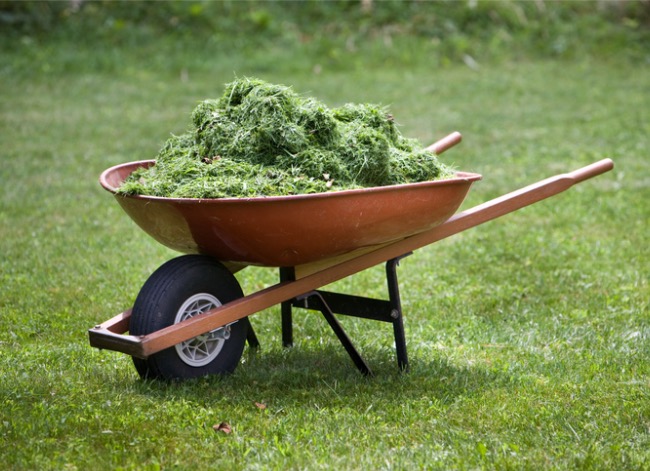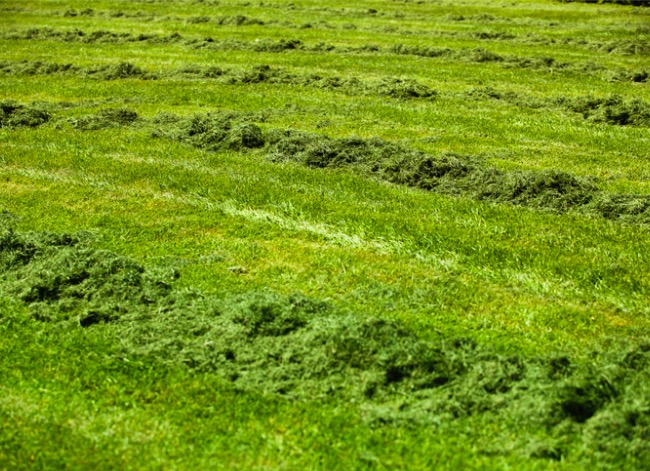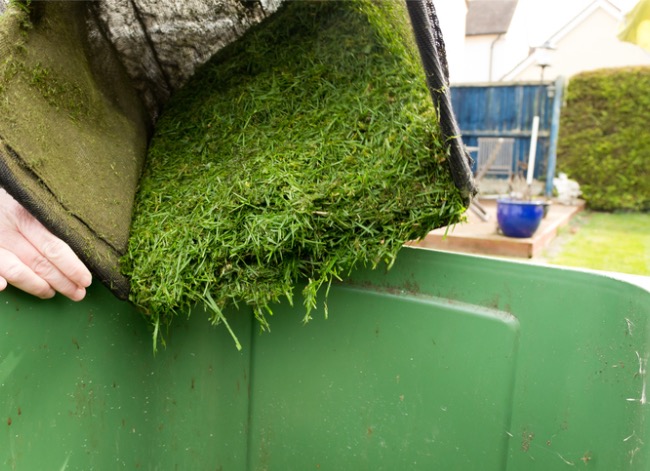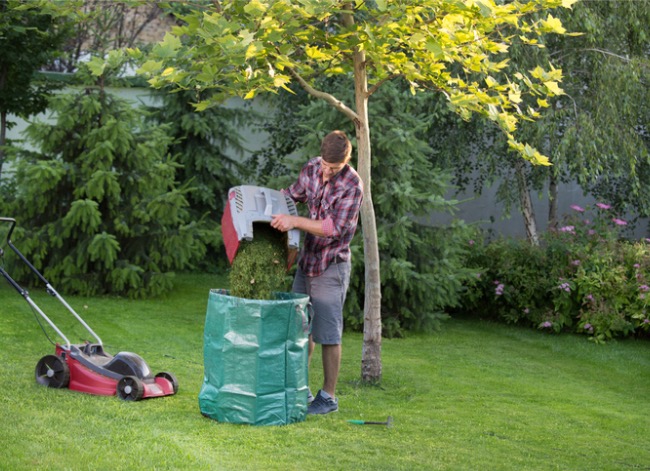

We may earn revenue from the products available on this page and participate in affiliate programs. Learn More ›
Q: We just moved into our house, and want to take care of things the right way. I’ve gotten lots of recommendations about what to do with grass clippings when we mow, but to me it sounds like a matter of personal opinion. What do you think?
A: The weekly summertime ritual of mowing the lawn seems like it would be more formalized, but the fact of the matter is that there’s more than one way to do it “right.” Dealing with grass clippings is a piece of the bigger puzzle that includes fertility, pest and disease control, and irrigation.
There is definitely an easy way and a hard way to manage grass clippings. The easy way works with nature’s processes while taking a slightly more laid-back approach to appearance. The hard way demands more time and resources, but might be the only choice in some cases. Keep reading to learn more about what to do with grass clippings.
Leave grass clippings on the lawn for free fertilizer.
Discharging grass clippings back onto the lawn is one of the best things you can do for your grass. Doing so reduces fertilizer consumption by 30 percent, moderates the soil temperature, and provides habitat for nutrient-cycling insects, earthworms, and microbes. Decomposing grass clippings contribute valuable organic matter to the soil, which improves both aeration and water retention, and leads to deeper and healthier grass roots.
Either a mulching mower or a side discharge mower will work. To avoid leaving too many clippings at a time, mow often enough to remove no more than one-third of the grass height at a time. For instance, if your mower is set at 2 inches, the grass should not be taller than 3 inches when you mow.
A common misconception is that grass clippings left on a lawn will cause thatch. Thatch is not made up of grass clippings, however. It is matted stems and roots that form just above and below the soil surface. The primary contributors to thatch buildup are too-frequent watering, overwatering, and soil compaction.
RELATED: Composting 101: How to Put Kitchen and Yard Waste to Work in Your Garden

Compost grass clippings.
At the end of a “no-mow May” or other long stretch that leaves the grass seriously overgrown, you’ll need to complete a more intensive cleanup, including necessity for a hard cut. In this case, it is best to mow at the highest mower setting and bag the clippings. Heavy clumps of cut grass left on the lawn could otherwise lead to dead patches, lawn disease, or insect infestation.
When grass clippings must be removed, don’t throw them in the trash. Compost them instead. Grass clippings are a rich source of nitrogen that will help to heat up an existing compost pile. They mix well with shredded fall leaves or even newspaper.

Use grass clippings as mulch for garden beds.
Another great use for old grass clippings is as mulch for garden beds. Just like the lawn itself, garden plants benefit from the insulation and moisture conservation properties of the mulch layer. The clippings help to improve the soil structure over time as they decay. Apply a thin layer—1 to 2 inches thick at most—on flower and vegetable gardens.
Dry clippings are best for this, since green or wet grass clippings tend to form a mat that will repel water. This is a great use for excess clippings removed from the street after mowing, as they tend to dry quickly while laying on hot pavement in the sun.
When to bag and get rid of grass clippings.
Sometimes it’s best to remove grass clippings from the property altogether. If the lawn is particularly weedy, it would be best not to introduce the weed-seed-laden clippings into a garden bed or compost pile. It is best not to reuse lawn clippings treated with herbicide or insecticide in compost or as mulch, since the chemical residues could cause problems in garden areas.
The best and easiest way to deal with grass clippings is by frequent mowing and recycling of the clippings back onto the yard. It is rare that clippings must be removed from the lawn, and even then they typically can be reused on site. Managing grass clippings should be easy most of the time. Leaving them on the lawn is great for the grass and simple for you.
RELATED: Can You Mow Wet Grass?

